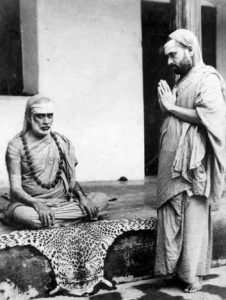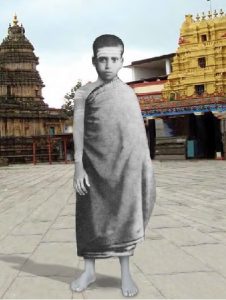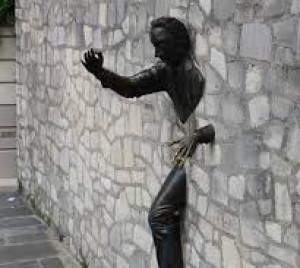The दक्षिणाम्नाय श्रीशारदापीठम्, शृङ्गेरी (dakShinAmnAya shrI shAradA pITham of Sringeri) launched with the blessings of Shri Bharati Tirtha Mahaswami, a modest “searchable” database of Shankara bhAShya-s on the three canonical texts of Advaita over six years ago – on the Shankara Jayanti on May, 20, 2014.
Without doubt it is a stupendous and fantastic job carried out by several dedicated workers from The Sringeri Math at Srirangam; The Sri Shankara Advaita Research Centre, Sringeri; Sriranga Digital Software Technologies, Srirangapatna and many others. The first offering of Advaita Sharada is a text searchable, extensively hyperlinked Internet edition of the Sri Shaankara Granthavali, published by the Vani Vilasa Press, Srirangam. It has been under constant improvement ever since and since about a year ago, additional texts like prakaraNa grantha-s, commentaries and sub-commentaries have been added to it. There are also plans to introduce multimedia “Leveraging audio, video, commentaries, sub-commentaries, notes, tags and hyperlinks,” and “to provide a platform for in-depth research and additional learning for seekers, scholars and students.”
The link to the top page is: https://advaitasharada.sringeri.net/
The page comes with 5 Navigation buttons at the top. They are: Continue reading






 Most people (or at least those who visit this website!) will be aware that the dates for Shankara’s birth and death are a trifle hazy. It is generally assumed that he lived around the ninth century A.D. and had a fairly short life, dying at around the age of 32. Fewer people will know, however, that one of the principal Maths – namely that at Sringeri – actually has his date of birth as 44 BCE. And 509–477 BCE are the dates based on records from other Maths!
Most people (or at least those who visit this website!) will be aware that the dates for Shankara’s birth and death are a trifle hazy. It is generally assumed that he lived around the ninth century A.D. and had a fairly short life, dying at around the age of 32. Fewer people will know, however, that one of the principal Maths – namely that at Sringeri – actually has his date of birth as 44 BCE. And 509–477 BCE are the dates based on records from other Maths!